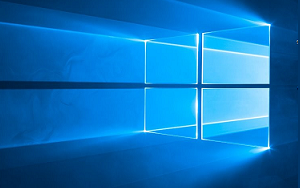Windows 11 introduces new features and customization options for the taskbar, allowing users to tailor their desktop experience. This guide provides detailed instructions on how to modify the taskbar to suit your preferences.
Introduction to Windows 11 Taskbar Customization
Windows 11 brings a refreshed look to the Windows operating system, and one of its most notable changes is the redesigned taskbar. The taskbar in Windows 11 is more than just a place to see your open apps; it's a central hub for accessing tools, settings, and notifications. Customizing the taskbar to fit your needs can significantly enhance your productivity and user experience.
1. Accessing Taskbar Settings
Before you begin customizing your taskbar, you need to know how to access the taskbar settings. Follow these steps:
- Right-click on an empty area of the taskbar.
- Select Taskbar settings from the context menu.
- The Settings window will open with the Taskbar section selected.
2. Center or Left-align Icons
Windows 11 centers the taskbar icons by default. However, you can choose to align them to the left if you prefer the traditional Windows layout:
- In the Taskbar settings, find the Taskbar alignment option.
- Select either Center or Left from the dropdown menu.
3. Customizing Taskbar Appearance
Windows 11 allows you to personalize the appearance of your taskbar. Here's how you can change its look:
- Navigate to Settings > Personalization > Colors.
- Choose your color mode (Light or Dark) for the system and apps.
- Enable Transparency effects to give the taskbar a modern look.
- Select Accent color to apply a color of your choice to the taskbar.
4. Adding or Removing Taskbar Icons
You can customize which icons appear on your taskbar:
- Go to Taskbar settings.
- Select the icons you want to show or hide under the Taskbar items section, such as Search, Task view, Widgets, and Chat.
5. Pinning Apps to the Taskbar
Pinning your favorite apps to the taskbar allows quick access:
- Open the Start menu, navigate to the app you want to pin.
- Right-click the app and select Pin to taskbar.
- Alternatively, drag and drop the app icon directly onto the taskbar.
6. Managing Taskbar Overflow
To manage space on your taskbar, Windows 11 includes a taskbar overflow feature:
- When your taskbar is filled with pinned and running apps, the overflow menu will appear.
- Click the chevron icon to view additional apps in the overflow menu.
7. Customizing System Tray Icons
The system tray, located at the right end of the taskbar, can also be customized:
- In Taskbar settings, scroll to the Notification area.
- Click Select which icons appear on the taskbar.
- Toggle the switches to show or hide system tray icons.
8. Using Taskbar Widgets
Windows 11 introduces widgets for quick access to personalized information:
- Click the Widgets icon on the taskbar or press Windows + W.
- Customize your widget board by adding or removing widgets.
- Arrange them according to your preference.
9. Taskbar Shortcuts and Keyboard Tips
Enhance your efficiency with these taskbar shortcuts:
- Open apps pinned to the taskbar with Windows + [Number] (e.g., Windows + 1 opens the first pinned app).
- Cycle through apps using Windows + T.
- Access taskbar settings directly with Windows + I.
10. Troubleshooting Taskbar Issues
If you encounter any issues with the taskbar, try these solutions:
- Restart Windows Explorer through the Task Manager.
- Ensure your Windows is up-to-date with the latest updates.
- Run the Windows Troubleshooter for taskbar issues.
Conclusion
Customizing the taskbar in Windows 11 is a straightforward process that can greatly enhance your workflow and personalize your desktop experience. With these steps, you can tailor the taskbar to suit your preferences, ensuring that everything you need is just a click away. Stay updated with the latest Windows features to further optimize your taskbar as new updates are released.







